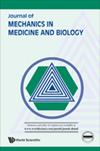基于卷积神经网络和支持向量机模型的大学生脑电图信号情感分析模型
IF 0.6
4区 医学
Q4 BIOPHYSICS
引用次数: 0
摘要
情感分析在教学评价中具有重要意义。通过分析学生对教师的情感,教育机构可以对教学效果获得有价值的见解。这些数据可以指导课程开发、教学改进和教师培训计划。积极的情绪表明有效的教学方法、参与度和学生满意度;负面情绪标志着需要关注的领域。情感分析可以帮助识别模式、趋势和异常值,帮助有针对性的干预和个性化的支持。它还可以在不同的课程、教师和部门之间进行比较。然而,考虑到潜在的偏见和反馈的上下文性质,确保情感分析算法的准确性和公平性至关重要。本文提出了一种结合卷积神经网络(CNN)和支持向量机(SVM)的情感分类模型CNN - SVM。以综合类院校艺术专业学生为研究对象,通过采集学生在教学评价过程中的脑电图信号。采用CNN-SVM作为情感分析模型,对教学评价结果进行情感分析。脑电图是一种典型的生理信号,基于脑电图的数据更能真实地反映学生的情绪。自适应CNN特征提取函数和支持向量机的超泛化分类性能可以减少数据之间的个体差异和数据噪声,从而提高情感分类性能。实验结果表明,利用情感分析技术可以帮助教育机构更好地理解学生对教学的反馈和意见。在情感分析方面,推导出的CNN-SVM方法产生的融合算法具有较好的性能。本文章由计算机程序翻译,如有差异,请以英文原文为准。
A sentiment analysis model for electroencephalogram signals of students in universities using a convolutional neural network and support vector machine models
Sentiment analysis in teaching evaluation has significant implications. By analyzing students’ sentiments toward instructors, educational institutions can gain valuable insights into teaching effectiveness. These data can guide curriculum development, instructional improvements, and faculty training initiatives. Positive sentiment indicates effective teaching methods, engagement, and student satisfaction; negative sentiment flags areas that need attention. Sentiment analysis can help identify patterns, trends, and outliers, aiding in targeted interventions and personalized support. It also enables comparisons across different courses, instructors, and departments. However, it is crucial to ensure the accuracy and fairness of sentiment analysis algorithms, considering potential biases and the contextual nature of the feedback. This study proposes a sentiment classification model CNN–SVM that combines a convolutional neural network (CNN) and a support vector machine (SVM). Taking students majoring in art in comprehensive colleges and universities as the research object, by collecting the electroencephalogram (EEG) signals of students during teaching evaluation. CNN–SVM is used as the emotional analysis model to obtain the emotional analysis of teaching evaluation results. EEG is a typical physiological signal, and data based on this signal can more truly reflect student emotions. The adaptive CNN feature extraction function and the super generalization classification performance of SVM can reduce the individual differences and data noise between data, thereby improving sentiment classification performance. The experimental results demonstrate that using technology to analyze sentiment can assist educational institutions in more properly comprehending the feedback and opinions of students on instruction. With regard to sentiment analysis, the CNN–SVM method that is derived to produce the fusion algorithm has solid performance.
求助全文
通过发布文献求助,成功后即可免费获取论文全文。
去求助
来源期刊

Journal of Mechanics in Medicine and Biology
工程技术-工程:生物医学
CiteScore
1.20
自引率
12.50%
发文量
144
审稿时长
2.3 months
期刊介绍:
This journal has as its objective the publication and dissemination of original research (even for "revolutionary concepts that contrast with existing theories" & "hypothesis") in all fields of engineering-mechanics that includes mechanisms, processes, bio-sensors and bio-devices in medicine, biology and healthcare. The journal publishes original papers in English which contribute to an understanding of biomedical engineering and science at a nano- to macro-scale or an improvement of the methods and techniques of medical, biological and clinical treatment by the application of advanced high technology.
Journal''s Research Scopes/Topics Covered (but not limited to):
Artificial Organs, Biomechanics of Organs.
Biofluid Mechanics, Biorheology, Blood Flow Measurement Techniques, Microcirculation, Hemodynamics.
Bioheat Transfer and Mass Transport, Nano Heat Transfer.
Biomaterials.
Biomechanics & Modeling of Cell and Molecular.
Biomedical Instrumentation and BioSensors that implicate ''human mechanics'' in details.
Biomedical Signal Processing Techniques that implicate ''human mechanics'' in details.
Bio-Microelectromechanical Systems, Microfluidics.
Bio-Nanotechnology and Clinical Application.
Bird and Insect Aerodynamics.
Cardiovascular/Cardiac mechanics.
Cardiovascular Systems Physiology/Engineering.
Cellular and Tissue Mechanics/Engineering.
Computational Biomechanics/Physiological Modelling, Systems Physiology.
Clinical Biomechanics.
Hearing Mechanics.
Human Movement and Animal Locomotion.
Implant Design and Mechanics.
Mathematical modeling.
Mechanobiology of Diseases.
Mechanics of Medical Robotics.
Muscle/Neuromuscular/Musculoskeletal Mechanics and Engineering.
Neural- & Neuro-Behavioral Engineering.
Orthopedic Biomechanics.
Reproductive and Urogynecological Mechanics.
Respiratory System Engineering...
 求助内容:
求助内容: 应助结果提醒方式:
应助结果提醒方式:


